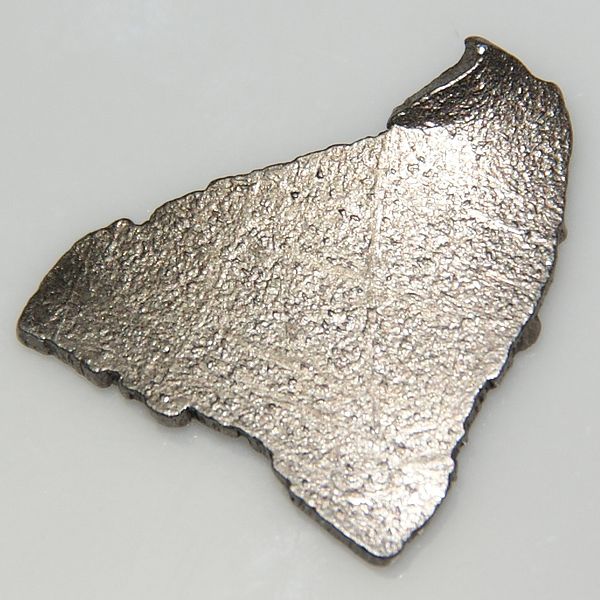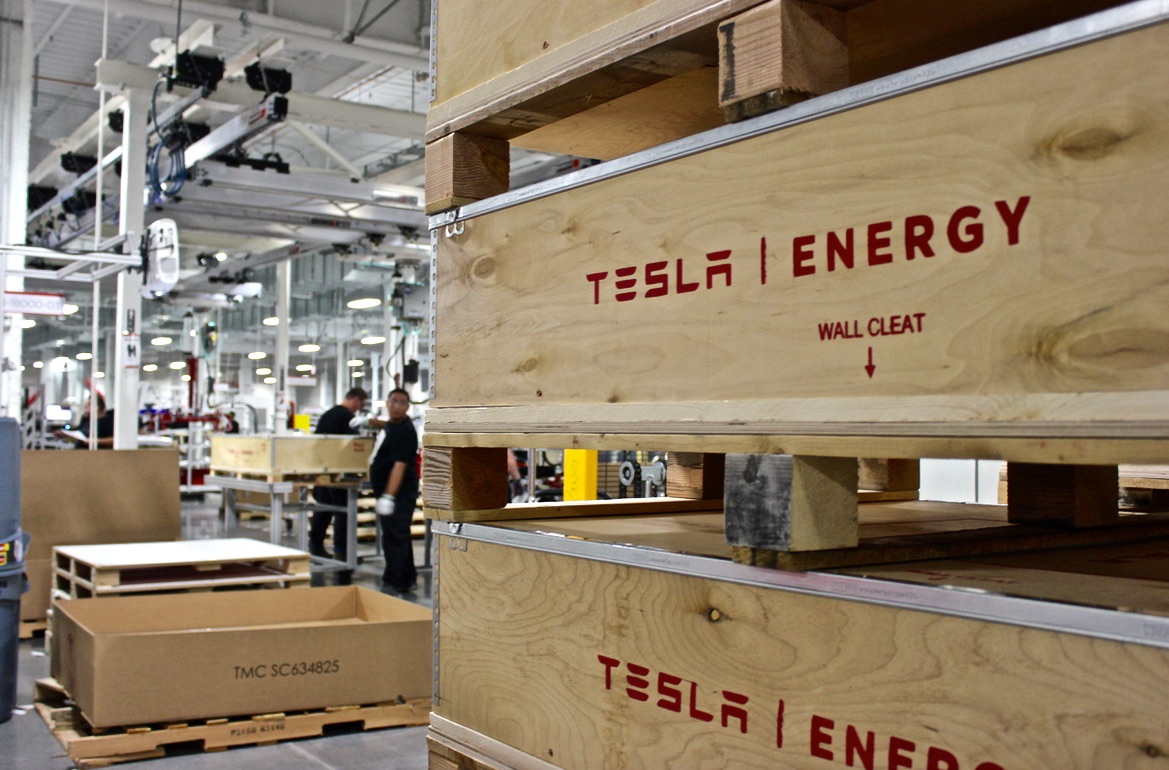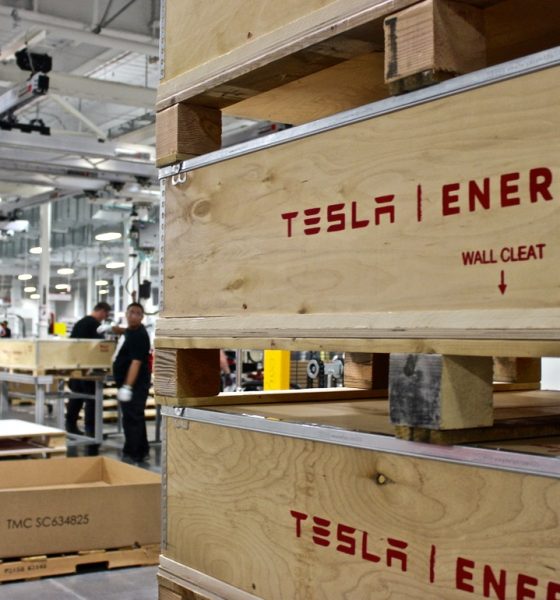With the surge in demand for electric vehicles causing the need for more ‘Gigafactories’ to be built, demand is high for lithium ion batteries’ key ingredient: cobalt.
Cobalt is an earth metal that makes up about 35 percent of the lithium ion battery mix — the battery used in EVs and smartphones. The battery business makes up 42 percent of the global cobalt demand, and companies such as Tesla, Apple and Google are scrambling to secure as much of the precious metal as possible. Like most things, this is easier said than done.
Cobalt supply is already in a severe deficit and that’s without considering the exponential increase of nearly 500 percent in demand that is to come in the near future with the rise in popularity of EVs. Analysts at Macquarie Research predict that the global deficit for cobalt supply will reach 885 tons this year increasing year-over-year to about 5,340 tons in 2020. That’s a big problem.

Source: Materialscientist via Wikimedia Commons
Why not just get more cobalt?
The answer is not that simple.
Nearly 60 percent of the planet’s global cobalt supply comes from the tumultuous Democratic Republic of Congo where mining procedures aren’t exactly the portrait of safety. It’s reported that over 40,000 child workers employ the vast cobalt mines of the Congo and the UN estimates that 80 children die per year working in the mines. Among other hazards such as unsupervised and unprotected mining, excessive exposure can cause “cobalt lung” — a form of pneumonia that can lead to long-term respiratory illness and death.
With the extremely hazardous conditions of mines in the Congo going vastly unreported until recently, it is fair to expect that CEOs of tech companies will have to start answering some hard-hitting questions about the ethical sourcing of their cobalt supply.
So what does this all mean?
Well it means several different things depending on who you are.
If you’re an industry giant who consumes mass quantities of cobalt for production, you’re prob

U.S. Cobalt has key assets in Idaho, Utah and Alberta (Source: U.S. Cobalt)
ably looking for alternatives to the Congo. A more homegrown solution to this problem may be U.S. Cobalt. Tesla’s new Gigafactory in Reno, NV, will soon become the largest producer of lithium ion batteries in the world — for that they will need a lot of cobalt, something that may be difficult considering the global competition for this precious metal. Ethically sourced American cobalt could be the answer that Tesla needs.
If you’re an investor at a hedge fund, the cobalt deficit could mean big bucks for you. Several firms have begun buying up large physical amounts of cobalt in a hoarding maneuver. The plan is that they will hold the cobalt supply until demand increases more. The metal is now sold at around $19 per pound — a 50 percent increase since September 2017. Investors will likely sit on the supply until it’s increased to around $25 per pound. Several of these purchasers are the China State Reserve who bought 5,000 tons, and Pala Investments, Ltd. Pala has recently started a $150 million fund to buy more of the Earth’s cobalt supply.
“We have been focused on the evolution of the battery chemistries and this has allowed us to invest early in different components of the battery,” Stephen Gill, managing partner at Zug, Switzerland-based Pala Investments, told Bloomberg. “We hope to continue to be ahead of the curve as technologies evolve.”
For now they certainly are ahead of the curve, but this could potentially be a lucrative position for even the most modest investor. Right now on the Toronto Stock Exchange, U.S. Cobalt (TSX: USCO.V) is trading at around just 42 cents. Investors could quickly snatch up large amounts of stock at a low price, in hopes that the cobalt demand shifts from the Congo to America.
Renowned mathematician Banesh Hoffman said it best, “with every new discovery in science brings with it a host of new problems.” That certainly rings true in the search for an alternative to gas-burning vehicles, where we found a solution, only to discover the dire conditions involved in sourcing it.

Cybertruck
Tesla updates Cybertruck owners about key Powershare feature

Tesla is updating Cybertruck owners on its timeline of a massive feature that has yet to ship: Powershare with Powerwall.
Powershare is a bidirectional charging feature exclusive to Cybertruck, which allows the vehicle’s battery to act as a portable power source for homes, appliances, tools, other EVs, and more. It was announced in late 2023 as part of Tesla’s push into vehicle-to-everything energy sharing, and acting as a giant portable charger is the main advantage, as it can provide backup power during outages.
Cybertruck’s Powershare system supports both vehicle-to-load (V2L) and vehicle-to-home (V2H), making it flexible and well-rounded for a variety of applications.
However, even though the feature was promised with Cybertruck, it has yet to be shipped to vehicles. Tesla communicated with owners through email recently regarding Powershare with Powerwall, which essentially has the pickup act as an extended battery.
Powerwall discharge would be prioritized before tapping into the truck’s larger pack.
However, Tesla is still working on getting the feature out to owners, an email said:
“We’re writing to let you know that the Powershare with Powerwall feature is still in development and is now scheduled for release in mid-2026.
This new release date gives us additional time to design and test this feature, ensuring its ability to communicate and optimize energy sharing between your vehicle and many configurations and generations of Powerwall. We are also using this time to develop additional Powershare features that will help us continue to accelerate the world’s transition to sustainable energy.”
Owners have expressed some real disappointment in Tesla’s continuous delays in releasing the feature, as it was expected to be released by late 2024, but now has been pushed back several times to mid-2026, according to the email.
Foundation Series Cybertruck buyers paid extra, expecting the feature to be rolled out with their vehicle upon pickup.
Cybertruck’s Lead Engineer, Wes Morrill, even commented on the holdup:
As a Cybertruck owner who also has Powerwall, I empathize with the disappointed comments.
To their credit, the team has delivered powershare functionality to Cybertruck customers who otherwise have no backup with development of the powershare gateway. As well as those with solar…
— Wes (@wmorrill3) December 12, 2025
He said that “it turned out to be much harder than anticipated to make powershare work seamlessly with existing Powerwalls through existing wall connectors. Two grid-forming devices need to negotiate who will form and who will follow, depending on the state of charge of each, and they need to do this without a network and through multiple generations of hardware, and test and validate this process through rigorous certifications to ensure grid safety.”
It’s nice to see the transparency, but it is justified for some Cybertruck owners to feel like they’ve been bait-and-switched.
Energy
Tesla starts hiring efforts for Texas Megafactory
Tesla’s Brookshire site is expected to produce 10,000 Megapacks annually, equal to 40 gigawatt hours of energy storage.

Tesla has officially begun hiring for its new $200 million Megafactory in Brookshire, Texas, a manufacturing hub expected to employ 1,500 people by 2028. The facility, which will build Tesla’s grid-scale Megapack batteries, is part of the company’s growing energy storage footprint.
Tesla’s hiring efforts for the Texas Megafactory are hinted at by the job openings currently active on the company’s Careers website.
Tesla’s Texas Megafactory
Tesla’s Brookshire site is expected to produce 10,000 Megapacks annually, equal to 40 gigawatt hours of energy storage, similar to the Lathrop Megafactory in California. Tesla’s Careers website currently lists over 30 job openings for the site, from engineers, welders, and project managers. Each of the openings is listed for Brookshire, Texas.
The company has leased two buildings in Empire West Business Park, with over $194 million in combined property and equipment investment. Tesla’s agreement with Waller County includes a 60% property tax abatement, contingent on meeting employment benchmarks: 375 jobs by 2026, 750 by 2027, and 1,500 by 2028, as noted in a report from the Houston Business Journal. Tesla is required to employ at least 1,500 workers in the facility through the rest of the 10-year abatement period.
Tesla’s clean energy boom
City officials have stated that Tesla’s arrival marks a turning point for the Texas city, as it highlights a shift from logistics to advanced clean energy manufacturing. Ramiro Bautista from Brookshire’s economic development office, highlighted this in a comment to the Journal.
“(Tesla) has great-paying jobs. Not just that, but the advanced manufacturing (and) clean energy is coming to the area,” he said. “So it’s not just your normal logistics manufacturing. This is advanced manufacturing coming to this area, and this brings a different type of job and investment into the local economy.”
Energy
Tesla and Samsung SDI in talks over new US battery storage deal: report
The update was related by industry sources and initially reported by South Korean news outlets.

Recent reports have suggested that Tesla and Samsung SDI are in talks over a potential partnership to supply batteries for large-scale energy storage systems (ESS).
The update was related by industry sources and initially reported by South Korean news outlets.
ESS batteries to be built at Samsung’s Indiana plant
As noted in a report from Korea JoongAng Daily, the demand for energy storage systems has been growing rapidly in North America, thanks in no small part to the surge in AI investments across numerous companies. With this in mind, Tesla has reportedly approached Samsung SDI about a potential battery supply deal.
The deal is reportedly worth over 3 trillion Korean won (approximately $2.11 billion) and will span three years, according to The Korea Global Economic Daily. A battery supply deal with Samsung SDI could make sense for Tesla as the company already has a grid-scale battery, the Megapack, which is perfect for industrial use. Samsung SDI could simply supply cells for the EV maker.
Production of the batteries would reportedly take place at Samsung SDI’s joint venture factory with Stellantis in Indiana, which is currently under construction. Samsung SDI recently announced plans to use part of that plant’s EV lines to produce cells for ESS, with a targeted capacity of 30 GWh by the end of next year.
Tesla and Samsung’s partnership
At present, only a handful of manufacturers, including Korea’s LG Energy Solution, Samsung SDI, SK On, and Japan’s Panasonic, are capable of producing energy storage-scale batteries domestically in the United States. A Samsung SDI official issued a comment about the matter, stating, “Nothing has been finalized regarding cooperation with Tesla.”
The possible energy storage system deal adds another layer to Tesla’s growing collaboration with Samsung, which is already in line as a partner in the upcoming production of Tesla’s AI5 and AI6 chips. Early sample manufacturing of the AI6 is expected to begin in South Korea, with mass production slated for Samsung’s Texas-based Taylor foundry when it starts operations.
The AI6 chip will power Tesla’s next wave of high-volume projects, including the Optimus humanoid robot and the autonomous Cybercab service. Musk has called the partnership with Samsung a “real collaboration,” adding that he personally plans to “walk the line” at the Taylor facility to speed up progress.










